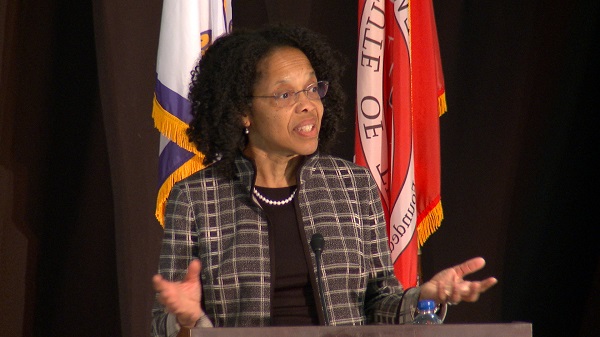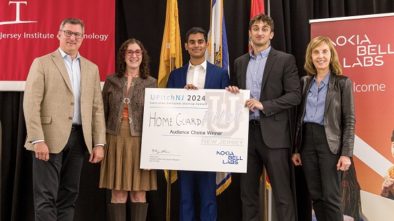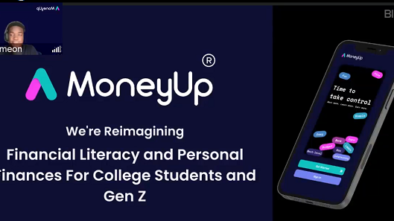Murray Center Event Shines Light on Inclusive Innovation and Entrepreneurship
Gilda Barabino has had many career firsts. She was the first African-American to earn a Ph.D. from Rice University and the first African-American on the faculty of chemical engineering at Northeastern University. When she joined the faculty of The City College of New York (CCNY), in 2013, she was the first African-American female to hold a position in engineering at a school that was not a historically black college or university. And she is now the dean of CCNY’s Grove School of Engineering.
“I understand and live under representation all too well,” said Barabino, a speaker at the Women Designing the Future 2019 – Game Changers! conference, held on March 29 at NJIT’s Murray Center for Women in Technology.
She was motivated to speak at the conference “because it is so critical and so important for our voices to be heard, for us to be known, to be recognized and to make a difference in bringing others into the field.”
Barabino focused her remarks on inclusive innovation and entrepreneurship and how they affect women, especially women of color. She noted that, over the past decade, the number of women earning bachelor’s degrees in engineering has increased by only 2.8%. “[The increase is] incremental, and it’s not at the rate that it should be,” she said.
Barabino also noted that about 40% of the women who enter science, technology, engineering or mathematics (STEM) careers eventually leave for non-STEM jobs. On the topic of innovation and entrepreneurship, she pointed out that women account for only 12% of people who have patented inventions.
“So,” asked Barabino, “what do we do about this? And what are some of the things that we should be thinking about as we move forward?”
Barabino answered this rhetorical question by talking about inclusion. She noted that it’s human nature to want to have a sense of belonging, but that each person also needs to value and understand his or her own uniqueness. “When both needs are balanced, you have inclusion.”
It is also desirable to have inclusion because it boosts innovation. “Diverse groups have been shown to outperform high-ability homogeneous groups,” said Barabino. “And it’s been shown that when there’s female representation in the top management, it improves the performance of the firm overall.”
Diverse groups are critical to inclusive innovation. “One definition of ‘inclusive innovation’ is that it’s the development and implementation of new ideas which aspire to create opportunities that enhance social and economic well-being for disenfranchised members of society,” said Barabino.
Inclusive innovation is especially relevant to women in STEM. “Women actually tend to go towards careers and career paths with a societal impact, where they can make a difference, and where they can make it better for other individuals, particularly those who are disenfranchised or underserved,” said Barabino.
Barabino concluded her talk by describing two of her initiatives to promote the role of women, including women of color, in innovation and entrepreneurship. One initiative is the Forum on Inclusive STEM Entrepreneurship.
“Women and women of color are the fastest-growing population of entrepreneurs, but there are a number of factors that get in the way of success. And so, what we were trying to do with this initiative was to bring stakeholders together on policy, so that aspiring founders, researchers and educators could work together to create an ecosystem of support.”
One insight gained from this initiative was that “there’s real power in telling a story, telling the stories of those who have succeeded and those who are trying to succeed, telling the stories of what they’re
[thinking about]
and what they’re working on. There’s power in the narrative, and many times we don’t know enough about what’s already being done.”
The second initiative is Quantitative Studies of Diversity and Inclusion (QSDI), a project that Barabino started with Paolo Gaudiano, executive director of QSDI. The goal is to promote diversity and inclusion in the field of scientific research.
“We [want to do that] by combining behavioral sciences and computer simulations to explore how organizations influence individuals, and how individuals influence the organizations and their performance,” she said. “We want to use these simulations to explore the impact of biases and the impact of interventions, and we can use that approach to look at and examine career pathways and the flow of resources in the entrepreneurial community.”
In conclusion, Barabino noted that “you’ve heard a lot about the gaps, but you’ve also heard about some things that would happen if we close those gaps. And I would posit that if we work together and we engage in mentoring and networking, engage in having increased access and exposure, we engage in changing policy and creating the kind of supportive environment that will work for all of us. We will see the difference that you want to see for women in tech, for women in STEM and women entrepreneurs.”




